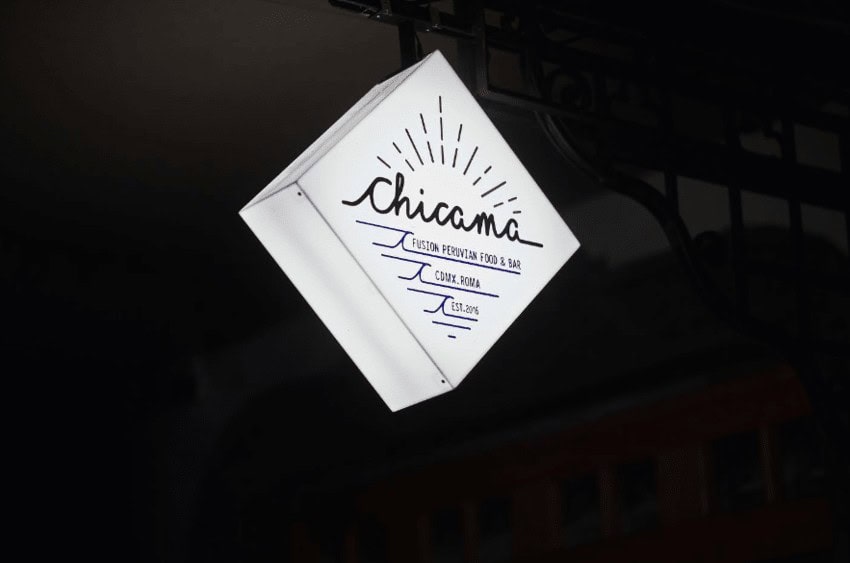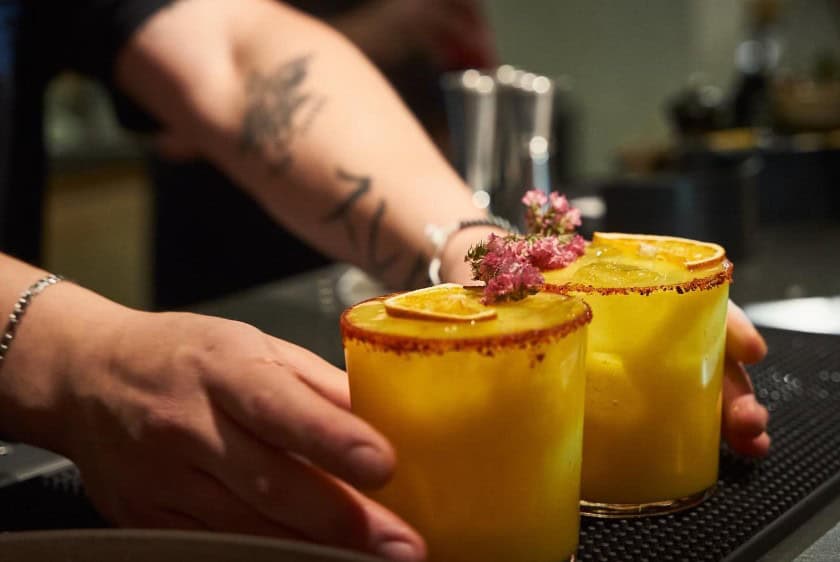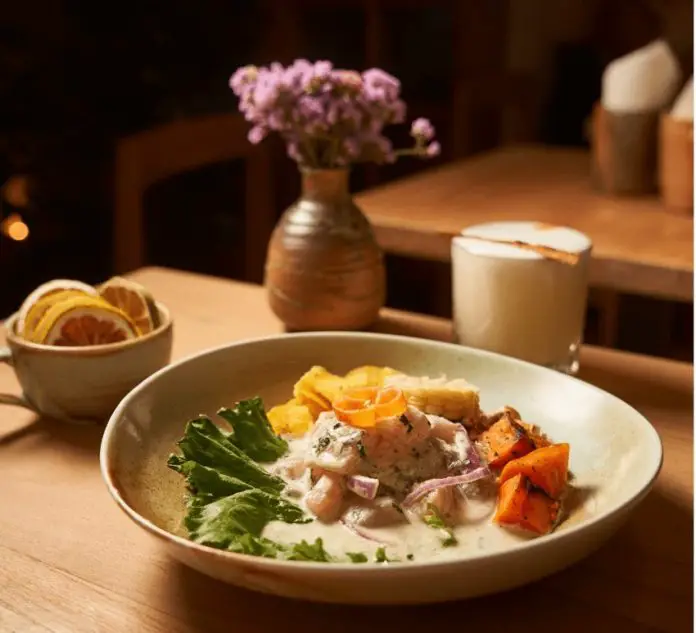I recently had an argument with a friend who couldn’t conceive of why anyone would come to Mexico City and eat Peruvian food. Or Italian food. Or Japanese food, or anything besides Mexican food. She was not convinced by my argument that Mexico City’s culinary scene is now more like London or New York than Oaxaca or Guadalajara. For some diners, eating anything but Mexican cuisine in what is one of the best cities in the world for it is blasphemy. But I would caution that ignoring the amazing new arrivals just because they are from a different culture or kitchen, is missing out on some of the most exciting dishes currently on offer here in the capital.
Take Chicama, for instance, which popped up this February in one of the locales of the Pasaje El Parian in Roma Norte. It’s almost imperceptible in the hustle and bustle of this street saturated with restaurants and bars, but the Peruvian Fusion on the sign caught my eye, as did the simple logo and set-up of plain wooden tables and chairs surrounded by pop art posters promoting Peruvian rock bands and liquor brands.

I wasn’t expecting much, but I took that first bite of delicately sliced amberjack fish in leche de tigre, cilantro specks floating on its milky surface, and I was hooked. I will fully admit to having a small obsession with canchita, a kind of Peruvian popcorn, served as a snack across South America. What happened to be alongside my ceviche but a little cluster of those salty, addictive beauties, as well as the soft-as-silk sweet potato chunks and fingernail-thin slices of fried green plantains. I was transported to the mind-blowing ceviches I tasted on a recent trip to Leticia, Colombia, the small Amazonian town that butts up against the Peruvian border. A perfectly foamy pisco sour in hand I ordered the anticucho — a popular street food in Peru made from beef heart — and congratulated myself on this dining discovery.
As it turns out, I was the one out of the loop. By the time Chicama made its way to Mexico City, the restaurant already had a built-in fan base. That’s because its first incarnation was in a beach shack in Puerto Escondido, started by Peruvian Erick Jauregui back before Puerto blew up into the hotspot it is today.
Jauregui grew up stealing snacks from the kitchen of his family’s summer restaurant in the Peruvian tourist town of Chimbote. He worked as a teenager in Lima hotels and restaurants and as a young adult was convinced by a buddy to move to Puerto for the surfing.
Chicama’s first location, a tiny place that Jauregui didn’t even have the first month’s rent for, only had four plates — if a fifth customer came in they had to wait for the dishes to be washed. The restaurant’s “fusion” moniker was born of necessity. In 2016, Peruvian herbs and spices were not easy to find on the Oaxacan coast, so Jauregui started to get inventive. The antichucho would be made with Mexican guajillo chiles instead of the traditional Peruvian ají panca. The potatoes that accompany it, not as good as Peruvian potatoes but still delicious, are covered in a spicy jalapeño green sauce. The habanero in their ceviche takes the place of ají de limo and recipes that call for huacatay, a Peruvian herb whose flavor is somewhere between mint, tarragon, basil and cilantro, get epazote instead, similar in its traces of mint and citrus, but also with a touch of anise. Huancaína, the Peruvian sauce that uses ají amarillo is made at Chicama with a combination of yellow bell pepper for coloring and habanero for spice.

All of this is told to me by Marco Capellini, in his slow beachy drawl that carries years of living in Puerto Escondido in its cadence. He started bartending for Chicama in 2020, when they blasted cumbias and mixed piscos to dispel the anxiety of the global pandemic.
“Everyone who works here, or comes in to eat is just enjoying themselves, having a good time,” he says.
While there’s no sand floor and no surfers in board shorts, Chicama Mexico City still has the kind of upbeat, laid-back vibe of a beach bar, and in an ode to their Oaxacan beginnings, most of the cocktails here are made with Mexican mezcal. The salsa drifting from the speakers is a tad louder than a regular restaurant and the waitresses hang out casually, one wearing pushed-up sweatpants, the other a floral bandana wrapped around her head.
“I walk by tables and hear people talking about the beach, about Puerto Escondido, and I like that this place takes people out of the city a little,” says Marco.
By the time the pescado en costra negra came out, I was glad that the brown rice was kind of tasteless— I would have never had enough space anyway. Instead, I let pieces of the tataki-style marlin encrusted in sesame and drenched in teriyaki melt on my tongue and feel happy I live in a city with so many culinary wonders.
Perfect for: A first date with a vegetarian — they have a garbanzo and a mushroom ceviche!
Recommended: Peruvian ceviche in leche de tigre, anticucho on the side and a pisco sour — or a mezcal sour — to wash it down.
Lydia Carey is a freelance writer and translator based out of Mexico City. She has been published widely both online and in print, writing about Mexico for over a decade. She lives a double life as a local tour guide and is the author of Mexico City Streets: La Roma. Follow her urban adventures on Instagram and see more of her work at www.mexicocitystreets.com.
